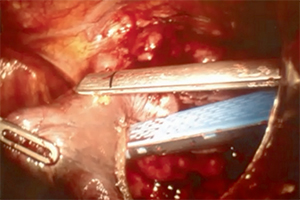Multi-institutional European experience of robotic thymectomy for thymoma
Abstract
Background: Robotic thymectomy for early-stage thymomas has been recently suggested as a technically sound and safe approach. However, due to a lack of data on long term results, controversy still exists regarding its oncological efficacy. In this multi-institutional series collected from four European Centres with high volumes of robotic procedures, we evaluate the results after robot-assisted thoracoscopic thymectomy for thymoma.
Methods: Between 2002 and 2014, 134 patients (61 males and 73 females, median age 59 years) with a clinical diagnosis of thymoma were operated on using a left-sided (38%), right-sided (59.8%) or bilateral (2.2%) robotic approach. Seventy (52%) patients had associated myasthenia gravis (MG).
Results: The average operative time was 146 minutes (range, 60-353 minutes). Twelve (8.9%) patients needed open conversion: in one case, a standard thoracoscopy was performed after robotic system breakdown, and in six cases, an additional access was required. Neither vascular and nerve injuries, nor perioperative mortality occurred. A total of 23 (17.1%) patients experienced postoperative complications. Median hospital stay was 4 days (range, 2–35 days). Mean diameter of resected tumors was 4.4 cm (range, 1–10 cm), Masaoka stage was I in 46 (34.4%) patients, II in 71 (52.9%), III in 11 (8.3%) and IVa/b in 6 (4.4%) cases. At last follow up, 131 patients were alive, three died (all from non-thymoma related causes) with a 5-year survival rate of 97%. One (0.7%) patient experienced a pleural recurrence.
Conclusions: Our data suggest that robotic thymectomy for thymoma is a technically feasible and safe procedure with low complication rates and short hospital stays. Oncological outcome appears to be good, particularly for early-stage tumors, but a longer follow-up period and more cases are necessary in order to consider this as a standard approach. Indications for robotic thymectomy for stage III or IVa thymomas are rare and should be carefully evaluated.
Cover






